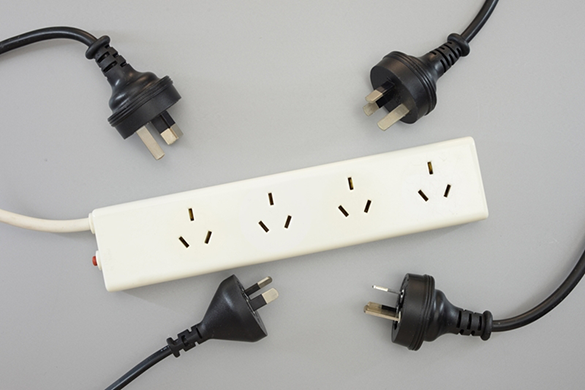
Heat-Free Technology Printing. Many benefits explained
07 Oct,2021
When heat is removed from the printing process, your printer functions more effectively and reduces your carbon footprint. That goes for printers at home, in small workspaces and in large, centralised business settings.
That's exactly what Epson's printing solutions do. Epson's unique Micro Piezo inkjet technology doesn't use heat in the ink ejection process, and it's this heat-free technology that is the basis for all of its print solutions. Epson empowers businesses to take back control of their print process, reduce their total cost of ownership and minimise their environmental impact all in one go.
This innovative capability is setting the standard for the next generation of printers worldwide. Let's examine the numerous benefits of heat-free technology and what makes it so revolutionary.
What is Heat-Free Technology?
Heat-Free Technology is a printing process that deposits ink droplets onto media without having to heat the ink first or go through the conventional transfer process.
Traditional laser printing technology utilises heat to charge, expose, develop, transfer and fix toner onto media. The Epson heat-free process, however, is a one-step process that doesn't require a waterfall of elaborate, interdependent steps to generate a printout.
"The Epson heat-free process is a one-step mechanism."
While the use of heat worked in older printer models, it now is a drag on productivity and often creates higher maintenance costs. In other words, bypass heat and you bypass downtime.
Heat-Free ink ejection vs laser technology
Epson uses what's called Micro Piezo inkjet technology, a unique system that prints via piezoelectric actuators instead of using heat. In this process, the actuators eject ink droplets while under an applied voltage, known as piezo displacement.
The Piezo systems means:
- No heating.
- No boiling.
- No cooldown.
- No contact between printhead and paper.
- No print time lag.
- No pressing or fusing.
Consider these advantages against the backdrop of laser technology, which:
- Requires five or more interdependent steps (potentially leading to five chances of mechanical failure).
- Requires preheating, heating and charging.
- Uses toner powder that fuses onto paper, which sometimes creates messy prints or poor transfer in high-density patterns.
- Generates more waste.
- Uses more assembled parts, both new and for replacement.
- Pulls more electricity to warm up the machine.
Compared to its competition, Piezo heat-free technology is far and away a cleaner, more efficient option.

Productivity, performance and quality
The primary, secondary and tertiary benefits of Epson's heat-free technology printers are world-renowned. Here's a look at a few of those advantages:
Primary
- Higher-quality print jobs.
- Faster service and uptime.
- Greater media flexibility.
Secondary
- Lower power consumption.
- Reduced waste.
- Less intervention.
Tertiary
- Reduced carbon footprint.
- Lower total cost of ownership.
- Fewer consumables.
From end to end, every print job is made easier: fewer paper jams, no ink or toner spillage or drying, faster speeds and lower lifetime costs. At the end of the day, customers just want their lives to be a little less hectic, which means less time spent troubleshooting the printer, opening panels and paper trays in endless frustration.
Environmental impact
One of the foremost reasons heat-free technology is so transformative in today's economy is because it corresponds to a larger movement toward eco-friendliness and corporate social responsibility (CSR).
The relationship between brands and buyers is now fundamentally different. It's not enough for a company to sell great products at great prices; they also need stellar customer service, a positive brand image and a dedication to values that supersede their core business or industry. If that sounds like a tall order, consumers don't think so.
More than 90% of consumers are more likely to trust a brand that supports social or environmental causes, a Cone Communications CSR study found. This high level of brand affinity makes business owners and investors sit up a little straighter, as there is definite upside to aligning commercial goals with customer values. That's why Fortune 500 companies spend $20 billion annually on corporate social responsibility programmes, according to Harvard Business Review.
While there are a multitude of ways for businesses to go green and to be more socially aware, some of the more immediate and practical avenues exist right inside their commercial offices.
For instance, business printing solutions, whether centralised or independently managed, are as good a starting point as any to realise significant energy savings.
Heat-free printers:
- Reduce carbon footprints by using less energy.
- Produce less emissions.
- Produce fewer waste and consumables.
- Require fewer parts, assembly and maintenance.
- Print faster and more efficiently, with a low cost-per-page.
- Use durable materials that increase the life span of the equipment.

A printer that works correctly the first time and is less likely to malfunction due to its simplicity means businesses save on operation and utility expenses. Plus, a heat-free ink ejection system means the unit itself isn't heating up or cooling down all day long, increasing the temperature of the workplace, draining electricity and impacting the general climate and well-being of the office environment and its workers.
As you can see, there's no shortage of heat-free printer benefits.
Revolutionising printing
Companies that adopt heat-free technology have the potential to scale their printing solutions across the entire scope of their business, especially large enterprises that operate multiple sites and have sprawling floor plans. A dedicated "printing area" of the building is likely to be warmer, whereas printers located throughout different parts of the office may lead to irregular use or long queues at certain workstations. Slow, inefficient printing will slow down your company regardless of the setup.
Heat-Free printers, on the other hand, promote uptime, limit paper jams and make your office right-sized for 21st-century efficiency.
At Epson, printers aren't just paper and ink; they're an investment in your own sustainability and productivity. To see our full range of printing solutions, check out our offerings here.


